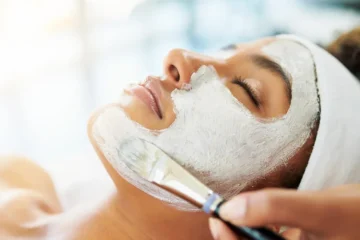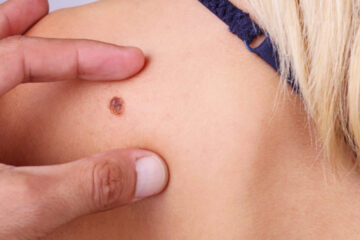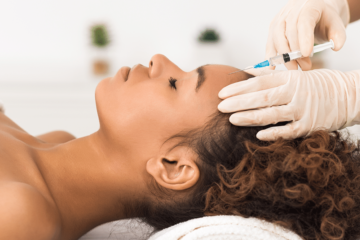Aesthetic dermatology is a rapidly growing field that focuses on improving the appearance of the skin, hair, and nails. With advancements in technology and treatment options, aesthetic dermatology offers a wide range of procedures to address various cosmetic concerns and enhance natural beauty. In this comprehensive guide, we’ll explore the secrets of aesthetic dermatology, including popular treatments, innovative techniques, and what to expect during a consultation.
Understanding Aesthetic Dermatology
Aesthetic dermatology, also known as cosmetic dermatology, is a specialized branch of dermatology that focuses on improving the appearance of the skin, hair, and nails. Aesthetic dermatologists are trained to address a wide range of cosmetic concerns, including:
- Wrinkles and fine lines
- Uneven skin tone and texture
- Acne and acne scars
- Hyperpigmentation
- Hair loss
- Excessive sweating
- Unwanted hair
Aesthetic dermatology treatments are non-invasive or minimally invasive procedures that are performed in-office and require little to no downtime.
Popular Aesthetic Dermatology Treatments
- Botulinum Toxin (Botox/Dysport/Xeomin):
- Botulinum toxin injections are used to reduce the appearance of wrinkles and fine lines by temporarily relaxing the muscles that cause them. Common areas for treatment include the forehead, frown lines, and crow’s feet.
- Dermal Fillers (Hyaluronic Acid Fillers):
- Dermal fillers are injectable gels used to restore volume to the face and smooth out wrinkles and folds. Common areas for treatment include the cheeks, lips, nasolabial folds, and marionette lines.
- Chemical Peels:
- Chemical peels are exfoliating treatments that remove the outer layer of dead skin cells, revealing smoother, brighter skin underneath. They can help improve the appearance of acne, hyperpigmentation, and uneven skin tone and texture.
- Laser Skin Resurfacing:
- Laser skin resurfacing uses laser technology to remove the outer layer of skin and stimulate collagen production, resulting in smoother, younger-looking skin. It can help improve the appearance of wrinkles, fine lines, acne scars, and uneven skin tone and texture.
- Microneedling:
- Microneedling uses a device with fine needles to create tiny punctures in the skin, stimulating collagen production and promoting skin rejuvenation. It can help improve the appearance of wrinkles, acne scars, and uneven skin texture.
- Platelet-Rich Plasma (PRP) Therapy:
- PRP therapy uses the patient’s own blood to stimulate collagen production and promote skin rejuvenation. It can help improve the appearance of wrinkles, acne scars, and hair loss.
- Hair Restoration Treatments:
- Hair restoration treatments, such as platelet-rich plasma (PRP) therapy and low-level laser therapy (LLLT), can help stimulate hair growth and prevent further hair loss in both men and women.
Innovative Techniques in Aesthetic Dermatology
- Micro-Botox:
- Micro-Botox, also known as “baby Botox,” involves injecting small doses of botulinum toxin into the skin to improve skin texture, reduce pore size, and control oil production. It can help achieve a smoother, more youthful complexion without freezing facial expressions.
- Thread Lifts:
- Thread lifts involve inserting dissolvable threads under the skin to lift and tighten sagging skin. They can help improve the appearance of the face, neck, and jawline without surgery.
- Non-Surgical Nose Job:
- A non-surgical nose job, also known as a liquid rhinoplasty, involves using dermal fillers to reshape and contour the nose, correcting minor imperfections such as bumps, asymmetry, and drooping.
- Energy-Based Devices:
- Energy-based devices, such as radiofrequency, ultrasound, and laser devices, are used to tighten skin, reduce fat, and improve skin tone and texture. They can be used to treat a wide range of cosmetic concerns, including wrinkles, cellulite, and unwanted fat.
What to Expect During a Consultation
During an aesthetic dermatology consultation, your dermatologist will:
- Review Your Medical History:
- Your dermatologist will review your medical history, including any previous cosmetic treatments or surgeries, medications you are taking, and any underlying health conditions.
- Discuss Your Concerns and Goals:
- You will have the opportunity to discuss your cosmetic concerns and goals with your dermatologist. Be honest and specific about what you hope to achieve with treatment.
- Perform a Physical Examination:
- Your dermatologist will perform a physical examination of your skin, hair, and nails to assess your cosmetic concerns and determine the most appropriate treatment options.
- Develop a Customized Treatment Plan:
- Based on your concerns, goals, and physical examination, your dermatologist will develop a customized treatment plan tailored to your individual needs.
- Discuss Treatment Options and Expectations:
- Your dermatologist will discuss the various treatment options available to address your concerns and explain what you can expect from each treatment, including potential risks and side effects.
- Provide Pre- and Post-Treatment Instructions:
- Your dermatologist will provide you with pre- and post-treatment instructions to help you prepare for your procedure and ensure optimal results.
Conclusion
Aesthetic dermatology offers a wide range of treatments to address various cosmetic concerns and enhance natural beauty. Whether you’re looking to reduce wrinkles and fine lines, improve skin tone and texture, or restore lost volume, there is a treatment option available to help you achieve your goals. By understanding the secrets of aesthetic dermatology and working with a skilled and experienced dermatologist, you can unlock the secrets to beautiful, youthful-looking skin. If you’re considering aesthetic dermatology treatments, schedule a consultation with a board-certified dermatologist to discuss your options and develop a customized treatment plan tailored to your individual needs and goals.



